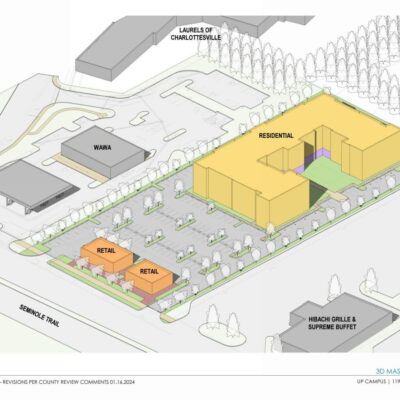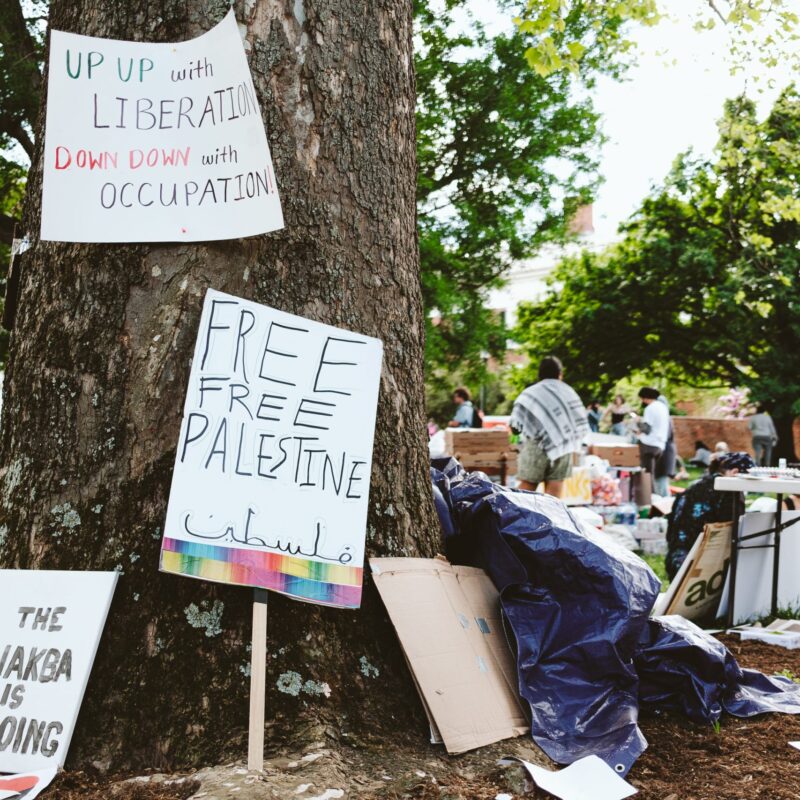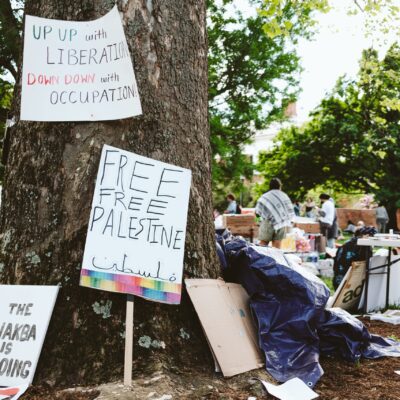In 1876, Crozet was created as a “whistle stop” on the Chesapeake and Ohio Railroad. According to the Crozet Master Plan, finalized in December of 2004, Crozet immediately set itself apart from other surrounding communities for its entrepreneurial spirit. Today, one thing is clear: Crozetians want to retain their small town identity in the midst of the redevelopment of their beloved downtown. The master plan recognized downtown Crozet as the most important area for both residential life and business activity.
|
Downtown Crozet is dubbed by the Crozet Master Plan as the most important area for both residential and commercial activity. In order to make the “Streetscape” vision a reality, the county needs to retain 26 utility, temporary construction, and right-of-way easement agreements from local property owners. “I am all for the Streetscape,” says owner Sandy Wilcox. “I am worried about surviving the construction period.” |
Yet, the implementation of the county’s vision for a pedestrian friendly, mixed-used downtown is currently on hold.
Impacted property owners are reluctant to sign easement agreements that are necessary for the redevelopment of downtown. The property owners are required to sign right-of-way, permanent drainage, utility and temporary construction easement agreements with the county to move forward with the Crozet Streetscape project.
“I think we are dealing with 26 property owners total,” says Jack Kelsey, transportation engineer in the county’s Office of Facilities Development. As of last week, the county has six to seven signed agreements. Most of the owners are private citizens, but two of them are corporations. CSX Railroad, which owns a parking lot in The Square, was the first to sign. Bank of America soon followed.
Mike Marshall, chair of the Crozet Community Advisory Council and publisher and editor of the Crozet Gazzette, says the reluctance among downtown Crozet property owners is heightened by the county’s approach.
Because the county has been speaking to each owner individually, each of them “can still look at the legal documents that they were presented with and wonder, ‘What about the guy next door? What are his terms?’” he told C-VILLE in an interview. “It’s all being done kind of piecemeal. The fact of the matter is that for a lot of these people, their livelihood is at stake.”
Sandy Wilcox, owner of the Blue Goose Building on Crozet Avenue hasn’t signed the agreement yet. The county, says Wilcox, has decided to make Main Street cross Crozet Avenue, “and that goes through my property to the next block. I don’t want that.” The road would go 100 feet into Wilcox’s property and stop. “I would have to rearrange my plans for my parcel to address that and presumably build the remaining 400 or 500 feet at my cost, and it’s not even something that I want to do,” he says.
However, Wilcox says he is willing to change his mind. “I am all for the Streetscape,” he says. “I am worried about surviving the construction period.”
The Crozet Streetscape project officially began in September 2007. Once construction begins, the county estimates that it will take a year to move the overhead utility wires and build the improvements.
“It’s kind of a moving target for us,” says Kelsey. “This is the first time we have ever done a project where we had to get so many easements and dedications from so many property owners, we had thought that we would be done already.”
Kelsey says he would like to have all of the documents signed in the next two months. “But how much time it takes is dictated by how much time it takes for us to work with the property owners,” he says.
For residents of Crozet, this project is of fundamental importance. “We need it to happen,” says Marshall. “There is no location for the library unless they get this new road stubbed in. And downtown realizes that it needs a library.”
The approved design for the new library calls for 18,000 square feet, a much larger facility compared to the 1,900-square-foot existing library.
“The strategy for downtown is to make sure that all the public buildings, meaning the library and the post office, stay there,” says Marshall. “We don’t want them to go out on the highway, because so long that the public buildings are there, people are going to have a reason to come downtown.”






